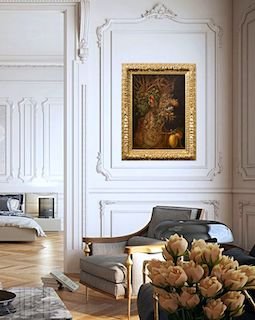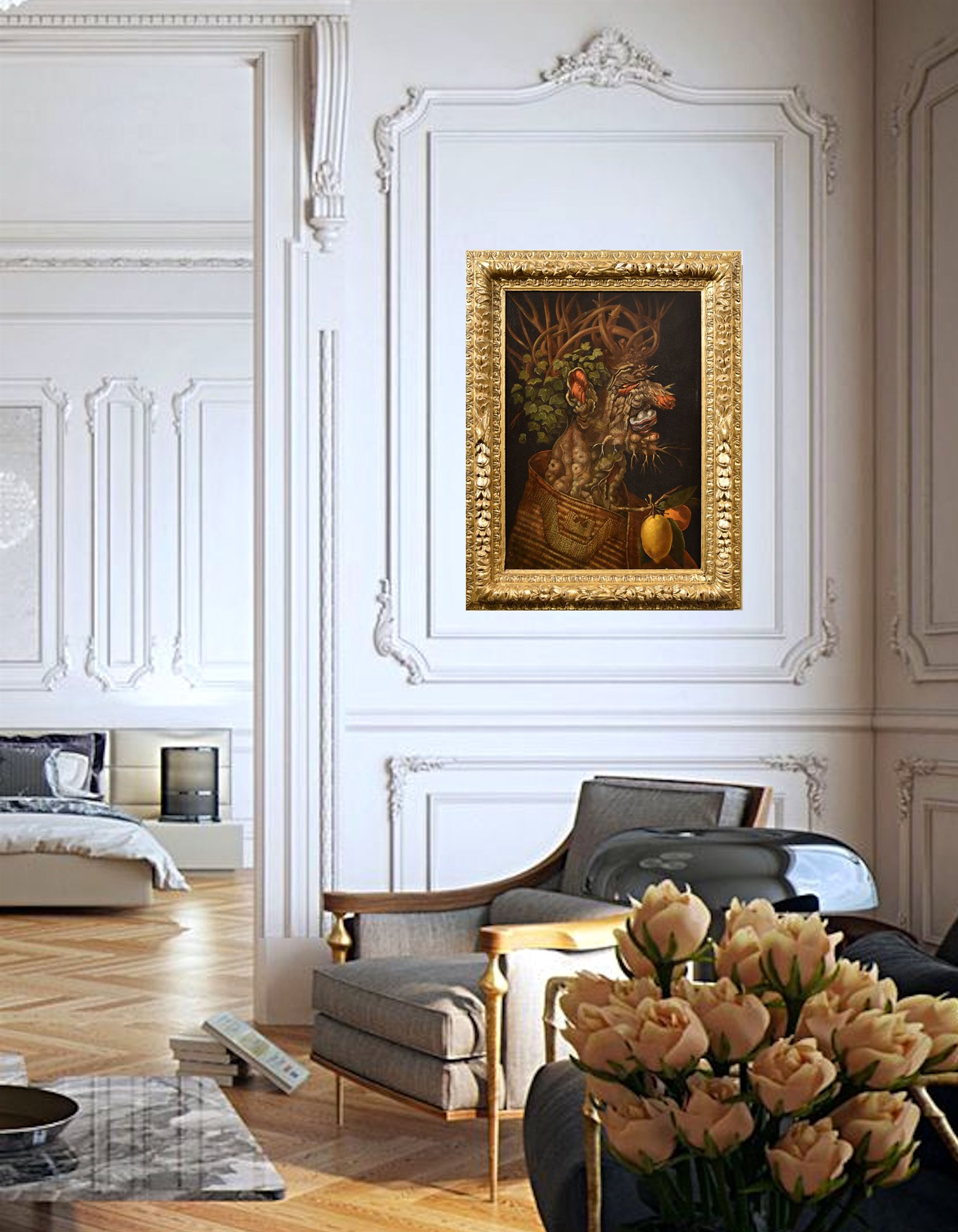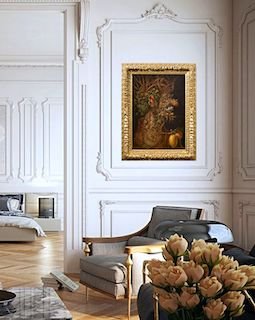Seguace di Giuseppe Arcimboldo (Milano 1527 - 1593)
Ritratto allegorico dell'Inverno
Giuseppe Arcimboldo (Milan 1527 - Milan 1593)
Follower of
Follower of
Allegory of Winter
Oil painting on canvas
71 x 50
framed 88 x 67 cm.
framed 88 x 67 cm.

The rare painting that we are pleased to show you depicts a personification of Winter and is a derivation of the famous prototype created in 1563 by the eclectic Milanese painter Giuseppe Arcimboldo (Milan 1526-1593), of which two versions are known, the first preserved at the Kunsthistorisches Museum in Vienna, the second at the Louvre Museum in Paris.
After leaving Milan, in 1562, towards the court of Vienna, Giuseppe Arcimboldo became the official painter of Emperor Maximilian II of Habsburg, for whom he created a series of paintings, the so-called 'Seasons'.
To create the paintings Arcimboldo uses an innovative technique, a flash of genius that will be a reason for imitation and reinterpretation for decades: he chooses to compose portraits by associating natural elements typical of every period of the year, thus composing the facial features of his subjects. .
According to the iconological reading, these works are to be interpreted as "imperial allegories", whose symbolic purpose was to represent the dominion of the Habsburg house not only over rival families, but in a certain sense over all creation, including the many resources of Mother Nature.
In their celebratory nature, they therefore wanted to be a tribute to the emperor: the profiles would be portraits of Maximilian II himself celebrating his power over the seasons and the elements.
Observing these works carefully, one cannot help but appreciate the extraordinary inventiveness of Giuseppe Arcimboldo; in our case, Winter, is personified by an elderly man, with a grim look, whose frowning face is mainly composed of a gnarled tree bark, with natural abrasions and swellings of the wood, and two mushrooms form the mouth, while a dense intertwining of now bare branches forms part of the unusual hair together with some ivy leaves.
The eye is a split in the wood, just as the ear is what remains of a broken branch; due to the lethargy of nature imposed by the winter season, here we do not find a bouquet of flowers and vegetables, but only a thin branch to which a lemon and an orange are hung, disruptive elements compared to the cold and dark colors of the work.
Finally, the man's garment is a cloak consisting of a simple straw mat, on which, however, a crown is embroidered (the effigy of the M, initial of the client Maximilian II, is missing).
It is certain that the anthropomorphic depictions of the Seasons conceived by Arcimboldo met with vast and immediate success, attested by the existence of subsequent autograph editions, replicas performed by collaborators and numerous ancient copies, more or less faithful to the originals, which were produced and circulated in Europe already by the end of the sixteenth century.
- Giuseppe Arcimboldo, Winter, 1563. Oil on lime wood, 66.6 × 50 cm. Vienna, Kunsthistorisches Museum (First version): https://www.khm.at/en/objectdb/detail/72/?offset=1&lv=list
- Giuseppe Arcimboldo, Winter, 1573. Oil on panel, Louvre Museum (second version, with flower frame): https://collections.louvre.fr/en/ark:/53355/cl010064967
- Giuseppe Arcimboldo, Winter, Oil on canvas, Huston Menil Collection: https://www.menil.org/collection/objects/5548-winter-l-inverno
Good storage conditions.
The painting is sold together with a pleasant gilded wooden frame.
ADDITIONAL INFORMATION:
The work is sold with a certificate of authenticity and a descriptive iconographic card.
We take care and organize the transport of the purchased works, both for Italy and abroad, through professional and insured carriers.
It is also possible to see the painting in the Riva del Garda gallery, we will be happy to welcome you to show you our collection of works.
Contact us, without obligation, for any additional information.
Follow us also on:



